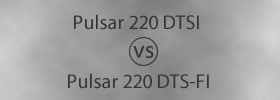Difference between Animal and Plant Cells
Key difference: Animal cells do not have rigid cell walls and chloroplasts, and they have smaller vacuoles. Plant cells have a rigid cell wall and chloroplasts and have a large central vacuole.

Cells are the smallest unit of life and are microscopic in nature, which means that they can’t be seen with the naked eye. Cells were discovered in 1665 by Robert Hooke and were named for the small “cells” (rooms) in a monastery. There are two types of cells, the prokaryotic cells and the eukaryotic cells. The prokaryotic cells are self-sufficient in nature, such as bacteria and archaea. On the other hand, the cells of all multi-cellular beings are eukaryotic cells. Both the animal cells and plant cells are eukaryotic cells, but they have different structures.
The main difference between an animal cell and a plant cell is that, plant cells have a cell wall, which the animal cell lacks. The cell wall which is made up of cellulose gives the plant cell rigidity resulting in a fixed, rectangular shape. Animal cells lack the rigidity hence, they tend to have a round and irregular shape. Animal cells tend to vary greatly in appearance. The cell wall allows high pressure to build inside of the plant cell without bursting. Due to this, the plant cell is able to accept large amounts of liquid through osmosis without bursting. Animal cells, which only have a thin membrane restricting access to the cell, tend to burst if they absorb too much extra water.
Both animal cells and plant cells have a defined nucleus, which contains chromosomes. The nucleus is protected and surrounded by cytoplasm, a watery or gel-like liquid that holds all the organelles in place. The cytoplasm, in turn is held in by the cell membrane.

However, all animal cells have centrioles whereas only some lower plant forms have it. Also, plant cells tend to have one large central vacuole that can take up to 90% of cell volume. Animal cells tend to have one or more small vacuoles. Vacuoles contain waste materials, water, and nutrients that can be used or secreted as necessary. In plant cells, vacuoles store water and maintain turgidity of the cell. In animal cells, they store water, ions and waste.
Another difference among them is that plant cells have chloroplasts for photosynthesis, which allows them to covert sunlight into food for the cell. Chloroplasts have its own DNA and tend to direct their own work. Animal cells lack chloroplasts and hence this ability, which is why we can’t live off of sunlight, sadly.
Further comparison between animal cells and plant cells:
|
|
Animal Cell |
Plant Cell |
|
Type of cell |
Eukaryotic |
Eukaryotic |
|
Cell walls |
No cell walls |
Rigid cell walls |
|
Shape |
Round (irregular shape) |
Rectangular (fixed shape) |
|
Organelles |
Cell membrane Nuclear membrane One or more small vacuoles Centrioles Cytoplasm Endoplasmic Reticulum Ribosomes Mitochondria Golgi Apparatus Microtubules/ Microfilaments Flagella in some cells Lysosomes Nucleus Cilia DNA
|
Cell membrane Cell wall Nuclear membrane Plasmodesma Large Vacuole Plastids Chloroplast Leucoplast Chromoplast Golgi Bodies Ribosome Endoplasmic reticulum Mitochondria Lysosome Cytoplasm Nucleus DNA Chromatin RNA Cytoskeleton Nucleolus |
Image Courtesy: sbaran.net









Comments
thanx .. ;)
Zain
Wed, 06/18/2014 - 22:44
:-) excellent this web site is very helpfull.
Saajan
Wed, 05/28/2014 - 06:08
awesome article! very helpful:)
anna
Sun, 05/11/2014 - 21:40
very educational and beneficial to my research!
anna
Mon, 05/12/2014 - 04:30
thanks helps
dudesss
Wed, 04/23/2014 - 04:54
Thank you, it was very helpful
Cliff Pasilu
Thu, 02/27/2014 - 19:31
Thanx it is a very good not and helpful for me
Shjv
Thu, 02/27/2014 - 00:17
Thnxs for this It was very helpful ! (:
A person
Thu, 01/23/2014 - 01:18
very educative site
BUNE TRYMORE
Fri, 12/20/2013 - 03:09
This was really beneficial to my research.Thanx!
BUNE TRYMORE
Fri, 12/20/2013 - 03:07
Pages
Add new comment